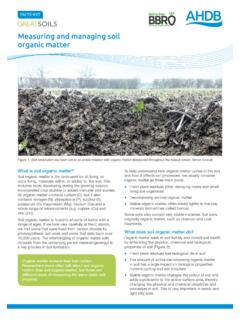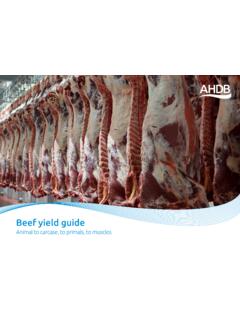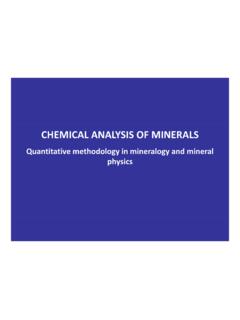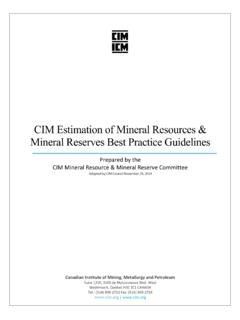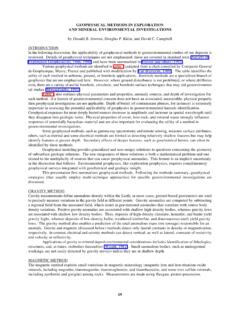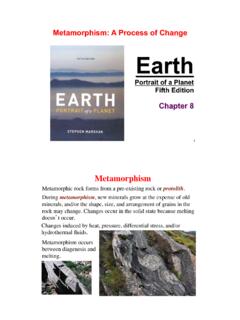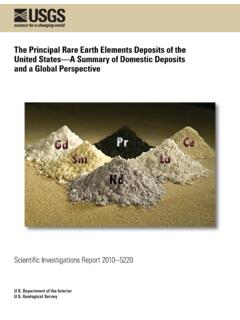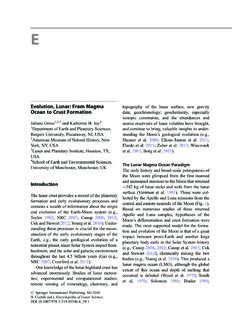Transcription of Principles of soil management - .NET Framework
1 Principles of soil managementGREATSOILS Contents 3 Introduction What is healthy soil? 4 Soil classification 6 Soil composition Texture Cation exchange capacity Organic matter Structure Water 12 Principles to improve soil health 15 Soil-related problems 18 Soil assessments Physical condition Chemical condition Biological condition 19 Further informationThis publication was created as part of the Soil Biology and Soil Health Partnership.
2 Funded by AHDB and the British Beet Research Organisation (BBRO), the partnership is a five-year (2017 2021) cross-sector programme of research and knowledge creditsSee page science-based guide can aid with the management and maintenance of healthy soils. Until recently, the term soil health has not been widely used. However, it has gained traction in the last few years by farmers, growers and the wider stakeholder community. No single set of on-farm management practices can put soils in good health. Good soil husbandry requires a flexible approach that is likely to vary from field to field, and season to season.
3 The agricultural industry has a huge breadth of experience and depth of understanding of the practical issues involved in the management of soils within UK crop rotations. Recent research, including that funded by AHDB and the BBRO, has also advanced knowledge of sustainable soil management . This publication brings together such information. It looks at what makes soil and how it is classified. It outlines soil-related issues and how they can be addressed. Finally, the guide highlights wider reference sources, most of which can be accessed via is healthy soil?
4 The intricate web of relationships between physical, chemical and biological soil components underpins crop and livestock health and productivity. Protecting soil health is also critical to environmental sustainability, as soils: Exchange gases, such as carbon dioxide and nitrogen oxides, with the atmosphere Regulate the flow of water and rainfall in the water cycle Provide nutrients for plant growth, by breaking down organic matter and altering chemical fertilisers Transform and store organic materials, as part of the terrestrial carbon cycle Degrade contaminants applied through human activities or left by floods and aerial depositionA healthy soil is able to sustain, in the long term, these important functions.
5 In a healthy soil, the interactions between chemistry (pH, nutrients and contaminants), physics (soil structure and water balance) and biology (including earthworms, microbes and plant roots) are optimised for the conditions in that place. IntroductionUpon this handful of soil our survival depends. Husband it and it will grow our food, our fuel, and our shelter and surround us with beauty. Abuse it and the soil will collapse and die, taking humanity with itAncient Sanskrit Scripture (1500BC)BiologicalChemicalPhysical4 Soils form over thousands of years (Figure 1) through local interactions of climate, geology, hydrology and management .
6 Physical and chemical alteration (weathering) break down parent materials (solid rocks and drift deposits). Finally, biological cycles of growth and decay produce the critical extra ingredient: organic matter (OM). Each field has unique geology determines the soil parent material and its properties, including soil depth, stoniness, mineralogy and texture. Soil maps, therefore, often closely resemble geological maps. Parent material is the main determinant of whether soils are likely to have a shortage or an abundance of particular nutrients phosphorus (P), potassium (K) and magnesium (Mg) or trace elements.
7 For example, some clays release enough potassium to support moderate crop growth, without additional fertilisation. Potassium-releasing clays include: chalky boulder clay, Gault Clay, Kimmeridge Clay, Weald Clay, Oxford Clay, Blisworth Clay. Note: Carboniferous clays do not release much classification Figure 1. The formation of soilFind out more about the underlying geology in your area. The Geology of Britain viewer is free to use and has good supporting information. Access the maps via matter25%air25%water45%mineralClimateOrg anismsTimeTopography Soil-forming factorsFormation of soil is a long and complex processAverage soil Soil processes Soil profileLosses5 Figure 2.
8 Soil profile showing characteristic horizons. This is a surface-water gley soil showing gleying as a result of waterlogging. The clay soil is relatively impermeable and, therefore, anaerobic conditions occur during excess rainfallSoil types are classified in a hierarchy based on observations of soil properties from soil pits (up to m deep). The number and arrangement of the layers that make up the soil (horizons) and their texture and colour are particularly largest classification units (equivalent to species for plants/animals) are the major groups.
9 Most agricultural soils, except some upland soils, fall into one of the subgroups of well-drained brown earths. Usually, the iron compounds in agricultural soils give the horizons a reddish-brown colour. However, when deprived of oxygen, such as under waterlogged conditions, the compounds change to a grey or bluish colour in one or more characteristic gleyed layers. Rusty orange-red mottles can also form, where air enters around roots or on the surface of larger pores (Figure 2). The smallest classification units are the soil series (equivalent to a crop variety or animal breed).
10 Named after the places where they were first fully described, soils in any given series have similar texture, depth, and mineralogy . On many farms, there are usually about three to four soil series but the number can be far higher than this. There are about 750 soil series in England and Wales. National soil maps group soils that often occur together into smaller map units . At present, there are about 300 soil associations and about 30 soilscapes in England and Wales (Scotland and Northern Ireland have a different classification system).






